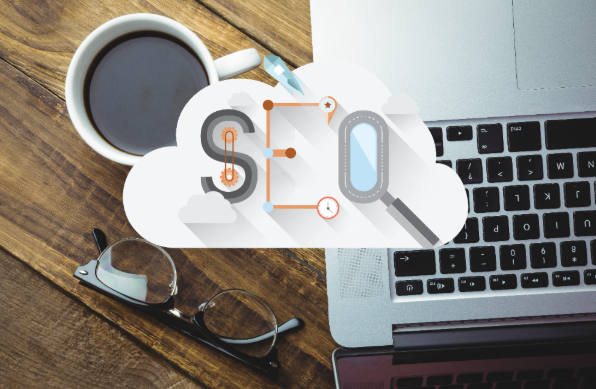Outsmart the Hackers: How You Can Shield Your Business from Cyber Threats

Cyber threats aren’t just a problem for giant corporations. In today’s world, even small businesses are in the crosshairs of hackers. The tactics are constantly evolving, from ransomware attacks to phishing emails, and the consequences can be devastating.
You leave the door open if you’re not actively protecting your business. This guide will explain what you need to know and do to outsmart cybercriminals and build an absolute defense.
Understanding the Modern Cyber Threat Landscape
Let’s start with the basics. Cyber threats come in many forms, each designed to exploit a weakness. Phishing emails, for example, often look legitimate and trick employees into revealing passwords. Ransomware locks down systems and demands payment to restore access. Then there are Distributed Denial-of-Service (DDoS) attacks, which flood your network and cause it to crash—making ddos attack protection a critical component of your cybersecurity toolkit.
Hackers don’t discriminate based on size. Smaller businesses are often easier targets because their defenses aren’t as strong. It only takes one weak link to compromise your entire system. Recognizing the types of threats is the first step in building a solid defense.
Building a Cybersecurity-First Culture
Cybersecurity isn’t just the IT department’s job. It’s everyone’s responsibility—from interns to executives. That’s why creating a cybersecurity-first culture matters.
Start with training. Employees should know how to recognize suspicious emails, avoid risky websites, and use secure passwords. Hold regular sessions. Make them mandatory. The more people understand, the less likely they are to make critical mistakes.
Policies are equally important. Clearly define what’s acceptable, what’s not, and what to do when something seems off. These guidelines should be written, shared, and revisited regularly. And don’t forget—when leadership takes security seriously, the rest of the team follows.
The Importance of Internal Cybersecurity Audits
Think of internal cybersecurity audits as routine checkups for your digital health. They help you identify vulnerabilities before hackers can exploit them.
They need to be specific to your organization, equipment, and the data you’re protecting. For a business with medical device cybersecurity compliance needs, running a basic office audit isn’t going to cut it.
Start by reviewing your current systems. Are your firewalls adequately configured? Is your data backed up regularly? Who has access to what? Conduct a complete asset inventory to determine what needs protection.
Then, perform a risk assessment. Look for weak points in your network, outdated software, and overly broad user permissions. Ensure you meet industry standards—especially when handling sensitive financial or health data.
You can either use audit tools or bring in external experts to assist. Partnering with professionals who offer red team services provides an added advantage—they simulate real-world attacks to uncover vulnerabilities that traditional audits might overlook. Regardless of your approach, ensure audits are conducted regularly, at least once a quarter. And don’t just file the report away—use the insights gained to strengthen your defenses and reduce risk.
Implementing Essential Security Measures
Once the people part is covered, it’s time to examine your systems. Several foundational practices can help protect your data.
- Use strong passwords and enable multi-factor authentication (MFA).
- Keep software updated. Outdated applications often have vulnerabilities that hackers exploit.
- Encrypt communications and secure data both at rest and in transit.
- Limit access to sensitive data. Not everyone needs admin privileges. Make access role-specific.
These are the basics, but they make a big difference. Don’t overlook them.
Leverage Technology: How AI and Automation Help Shield Your Business
Artificial Intelligence (AI) isn’t just a buzzword. It’s a practical tool in the fight against cybercrime.
AI-driven systems can detect threats faster than humans can. They analyze patterns in data and flag anything that looks suspicious. For example, if a login attempt comes from an unusual location at an odd hour, AI can block it in real time.
Automation adds another layer of protection. It allows you to set up rules that trigger instant responses—like isolating an infected device before the threat spreads. AI tools are also great for email filtering, identifying malicious links before anyone clicks on them.
The best part? These systems work 24/7, even when you’re sleeping.
Creating an Incident Response Plan
Even with strong defenses, attacks can still happen. That’s why you need a response plan.
Your plan should include three stages:
Before – Prepare contact lists, assign roles, and document procedures.
During – Act fast. Contain the breach, communicate with the right people, and start forensic analysis.
After – Report the incident, patch the vulnerability, and review what happened.
You should also run simulations. Practice helps everyone stay calm and act fast when real threats hit. In a regulated industry, ensure your plan aligns with reporting requirements.
Keeping Up with Evolving Threats
Hackers don’t rest. Neither should your cybersecurity strategy. Stay informed by subscribing to industry newsletters, joining cybersecurity forums, and following updates from organizations like CISA or NIST.
Technology changes quickly, and so do attackers’ tactics. What worked last year may not be enough today. Make learning part of your company’s routine.
Conclusion
Cybersecurity isn’t optional. It’s essential. From building awareness among your team to deploying AI-powered defenses and conducting regular audits, the key is to stay proactive. Don’t wait for a breach to take it seriously.
Start now. Review your current setup. Train your team. Schedule that internal audit. Hackers are always looking for an opening. Your job is to make sure they never find one.

The Hidden Business Power of Storytelling Through Books

Diamond Painting Apps & Digital Tools for 2025 Artists

Meeting Global Tastes: The Versatility of Commercial Tortilla Makers

Accelerating drug discovery through the DEL-ML-CS approach

AI in Marketing Is No Longer a Buzzword — It’s the Strategy

Benefits of Working with a Bathroom Remodeling SEO Company

The Full Guide To Penetration Testing

Pixel 10 Pro Fold Case: Why Choose Aramid Fiber?








